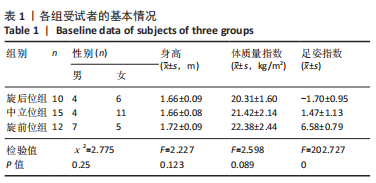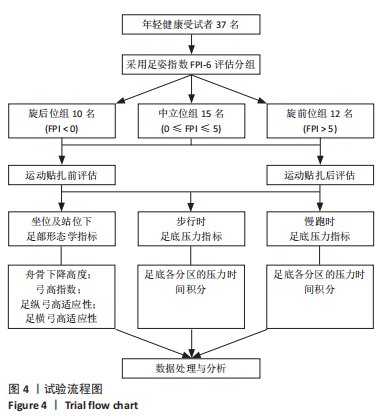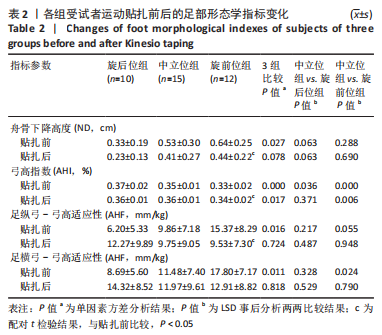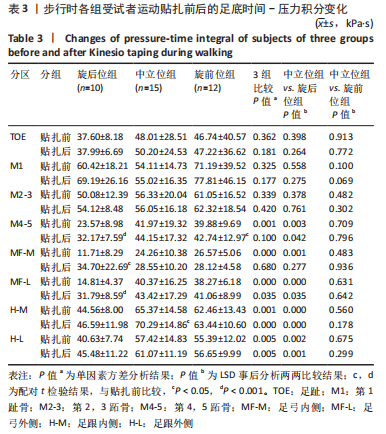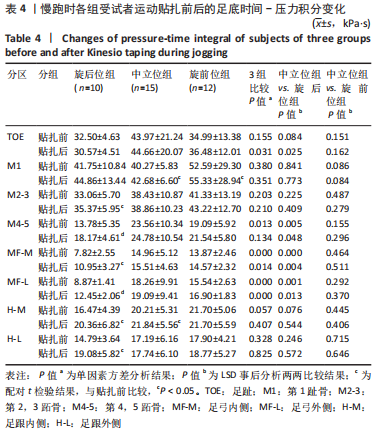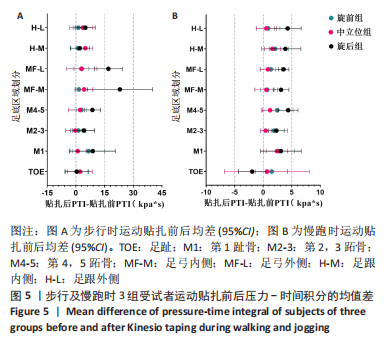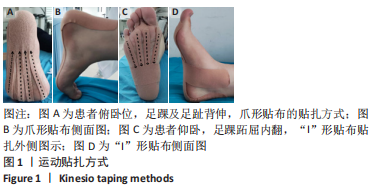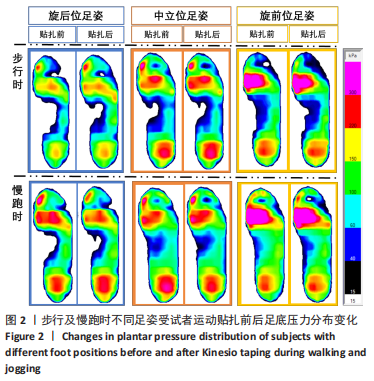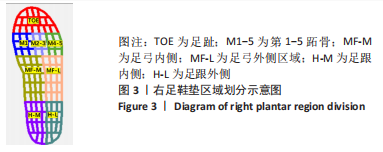中国组织工程研究 ›› 2024, Vol. 28 ›› Issue (18): 2800-2807.doi: 10.12307/2024.051
• 骨与关节生物力学 bone and joint biomechanics • 上一篇 下一篇
不同足姿受试者运动贴扎后步行及慢跑时的足底压力变化
柯竟悦1,马圣楠1,董洪铭1,李建萍1,张洪浩1,刘 超1,刘睿豪1,李古强2
- 滨州医学院,1 康复医学院,2 康复工程研究院,山东省烟台市 264003
Changes in plantar pressure of subjects with different foot positions during walking and jogging after Kinesio taping
Ke Jingyue1, Ma Shengnan1, Dong Hongming1, Li Jianping1, Zhang Honghao1, Liu Chao1, Liu Ruihao1, Li Guqiang2
- 1School of Rehabilitation, 2Rehabilitation Engineering Research Institute, Binzhou Medical University, Yantai 264003, Shandong Province, China
摘要:
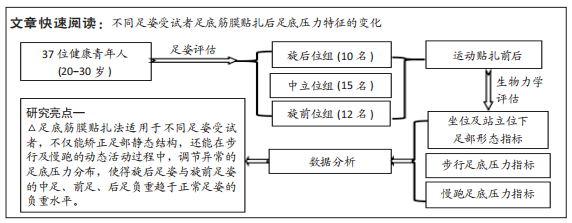
文题释义:
足姿:通过三维量化的评分方式得到足部的整体姿势,分为旋前足姿、旋后足姿和中立位足姿3种。异常的足部姿势,如过度旋前或过度旋后的足姿,会影响到足踝功能和下肢力线,导致步态特征的异常,继而引发肌肉骨骼系统代偿性损伤。足底压力:足底压力评估能直观反映患者在步行及运动活动期间,足部与支撑鞋面间的相互作用力及压应力,对临床诊断、疾患程度测定和疗效评价均具有重要意义。
背景:运动贴扎技术常用于各种运动损伤的处理,足踝部运动贴扎方式复杂多样,其中足底筋膜贴扎法所适用的人群更广泛,可用于不同足姿类型,但尚缺乏实际验证,所发挥的具体生物力学作用也不明晰。
目的:观察不同足姿受试者使用足底筋膜贴扎法后,在步行和慢跑时足底压力特征的变化。方法:于滨州医学院烟台校区招募37名年轻健康受试者进行试验,按照足姿指数6项进行评分,分为旋后位组、中立位组、旋前位组。分别于运动贴扎前后,采集并计算静态足部形态学指标(包括舟骨下降高度、弓高指数、足纵弓的弓高适应性、足横弓的弓高适应性)与步行和慢跑时足部各分区的压力时间积分,分析足底筋膜贴扎法具体的生物力学作用机制。
结果与结论:①一般资料:3组受试者的性别、身高、身体质量指数等一般资料无统计学差异(P > 0.05);贴扎前,不同足姿组间足部形态学各指标及前足外侧、中足、后足区域差异均有显著性意义(P < 0.01)。②静态足部形态学指标:贴扎后,舟骨下降高度、足纵弓弓高适应性、足横弓的弓高适应性3项指标的组间差异无显著性意义(P > 0.05),而弓高指数的组间差异仍有显著性意义(P < 0.05);旋后位组弓高指数略增大,但贴扎前后差异不显著(P > 0.05);旋前位组舟骨下降高度与足纵弓弓高适应性显著减小、弓高指数增加,贴扎前后差异有显著性意义(P < 0.05)。③步行时的足底压力指标:贴扎后,前足外侧、中足内侧区域的3组组间差异无显著性意义(P > 0.05)。旋前位组贴扎后前足外侧负重增加(P < 0.05),旋后位组贴扎后前足外侧、中足区域负重显著增大(P < 0.05),而后足区域贴扎前后差异不显著(P > 0.05)。④慢跑时的足底压力指标:贴扎后,前足外侧区域的组间差异无显著性意义(P > 0.05);旋前位组贴扎后,前足内侧区域负重显著增大(P < 0.05);旋后位组贴扎后,前足外侧、中足及后足区域负重均显著增大(P < 0.05)。⑤结果表明:足底筋膜贴扎法适用于不同足姿受试者,不仅能矫正足部静态结构,还能在步行及慢跑的动态活动过程中,调节异常的足底压力分布,使得旋后足姿与旋前足姿的中足、前足、后足负重趋于正常足姿的负重水平。
https://orcid.org/0000-0001-6948-2229 (柯竟悦)
中国组织工程研究杂志出版内容重点:人工关节;骨植入物;脊柱;骨折;内固定;数字化骨科;组织工程
中图分类号:
